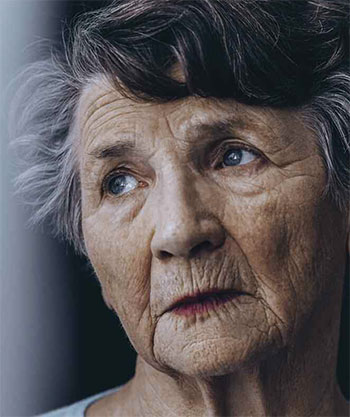A look at the research into cognitive impairment
All segments of the international population are living longer, and many will experience dementia. Policymakers are focused on the cost estimates of caring for elders with cognitive impairment. The World Alzheimer Report 2016, from Alzheimer’s Disease International, a global federation of 85 Alzheimer’s associations, highlighted the need to make dementia an international health priority. The numbers in the report are staggering: 47 million people are estimated to be living with dementia worldwide, with the number projected to increase to more than 131 million by 2050. The report recommends that nations develop a plan to address dementia, removing the stigma around it, and protecting the human rights of these individuals.
The United States has weighed in on the issue as well. In 2011, the Centers for Disease Control and Prevention published Cognitive Impairment: A Call for Action, Now! The publication emphasized incidence, cost, and surveillance of the aging Baby Boomer generation. It focused on state-level policy, with discussion of four target areas.
- Gather data to understand the impact, burden, and needs of people with cognitive impairment.
- Develop a comprehensive plan to respond to these needs in different agencies and organizations.
- Evaluate and expand comprehensive systems of support.
- Train health professionals to detect cognitive impairment in its early stages and assist patients to manage their care.
In this article, I’ll describe the recent methods of assessing and diagnosing cognitive impairment, synthesize the evidence of both psychosocial and pharmacologic treatments to prevent or ameliorate cognitive decline, and evaluate the mechanisms developed to prevent and treat cognitive impairment.
Cognitive decline
Early research in the 1980s identified 12 areas included in cognitive function:
- attention span
- concentration
- intelligence
- judgment
- learning ability
- memory
- orientation
- perception
- problem solving
- psychomotor ability
- reaction time
- social intactness.
Not all of these areas need to be assessed to determine a patient’s global cognitive function; however, it’s essential to evaluate memory performance and executive function. As neuroscientists have studied the brain using neuroimaging, executive function was found to be associated with the frontal lobes and higher order processes. These functions are evident in cognitive activity involving planning, initiation, maintenance, and adjustment of goal-directed behavior.


In the past 30 years, thousands of research studies have expanded our knowledge of cognitive decline and impairment and its assessment. New terminology has been adopted and refined with evidence to include subjective evaluations such as metamemory (attitudes and opinions) and memory self-efficacy (prediction and confidence). An individual may have extensive and accurate knowledge about how his or her memory functions, but also may believe that the ability to remember is poor. In a large multistate sample of community-residing older adults (N = 686), a significant finding was that memory self-efficacy was inversely related to age, with self-efficacy scores decreasing in each decade after 70 years of age. Memory self-efficacy is directly related to actual memory performance and is therefore relevant in evaluations of older adults.
Screening instruments, such as the Mini-Mental State Exam and the Saint Louis University Mental Status exam are considered reliable and valid ways to determine if further evaluation and referral are required, even though they don’t measure all the cognitive areas listed above. While screening measures have become more sensitive, in-depth memory testing is essential for the early detection of memory impairment and a comprehensive evaluation of an individual’s cognitive status.


AD or mild cognitive impairment?
The prevalence of AD is expected to increase to 13.2 million by 2050, making large-scale preventive interventions a priority. The National Institute on Aging and the Alzheimer’s Association (NIA-AA) proposed a framework for defining preclinical AD based on three stages. The model postulates that first abnormal amyloid beta plaques are deposited in the brain, but the patient is still cognitively normal. Next, a lag period occurs, followed by neuronal dysfunction, which presents as cognitive symptoms. The severity of symptoms is regulated by neurodegeneration, a destructive process in which neurons lose structure or function, and may result in their death. The NIA-AA suggested that memory dysfunction may be a key element in this transition or lag period.
Some older adults experiencing cognitive impairment don’t have AD, but rather a diagnosable syndrome called mild cognitive impairment (MCI). The prevalence rate of MCI in a nationally representative sample was 22%. Many clinicians and scientists believe that MCI is the prodromal phase of AD and other dementias and that its diagnosis depends on differentiating between objective and subjective memory performance. The NIA-AA established these criteria for assessing MCI:
- subjective memory complaints reported by the patient, caregiver, or clinician
- objective memory loss measured using a validated instrument, such as the WMS-R Logical Memory Test
- a global Clinical Dementia Rating score
- general cognitive and functional performance that prevents a diagnosis of dementia at the time of screening.
Subjective memory complaints, defined as everyday memory problems that may motivate older adults to seek care, are the diagnostic window into MCI. They’re robust predictors of cognitive decline and conversion to dementia. Rather than relying on the patient’s perception of their cognitive function to subjectively evaluate everyday memory function, which emphasizes the decremental view of cognitive aging (predicting that as aging progresses, predictable and quantifiable cognitive losses occur), these individuals should be evaluated using psychometrically sound measures, such as the WMS-R and Clinical Dementia Rating.
The relationship between subjective memory impairment and objective memory performance is not universally supported. Subjective evaluation of memory must be systematically assessed with a known measure, and more work is needed to identify the most important factors of subjective cognitive decline to aid clinical evaluation. Rabin and colleagues evaluated 34 cognitive self-report measures with 640 items that were used in 19 international studies. The authors found that the self-report instruments were used inconsistently, with only 25% used in more than one study. Results from a cross-sectional study of 221 African American adults with MCI emphasized that even though no consensus exists about subjective memory evaluation, a known measure of subjective memory function is preferred over a single question about someone’s perceived memory function.
Preventing cognitive decline
Little reliable consensus-based diagnostic criteria exist for cognitive decline, MCI, and AD; what does exist hasn’t been uniformly applied. This has led to insufficient evidence to support the use of pharmaceutical agents or dietary supplements as preventive measures. However, ongoing studies, including (but not limited to) antihypertensive medications, omega-3 fatty acid, physical activity, and cognitive engagement may provide new insight into the prevention or delay of cognitive decline. The Cochrane panel on cognitive-based interventions determined that firm conclusions can’t be drawn about the association of modifiable risk factors with cognitive decline or AD, but researchers continue to test interventions aimed at improving and remediating cognitive function, including treating causes of cognitive decline that are reversible, such as delirium and depression.
Delirium
The prevalence rate for delirium in older adults with dementia in the United States ranges from 22% in the community to 89% in the hospital. Delirium in patients with dementia is frequently unrecognized because of overlapping symptoms, no mental status baseline, and the tendency to attribute symptoms of delirium to worsening dementia. About 10% to 31% of patients admitted to the hospital have delirium, and 14% to 42% of older adults develop delirium while an inpatient. (See Identifying delirium risks and causes.)
Identifying delirium risks and causes
| Risk factors for delirium fall into four major categories: 1. Patient/physiologic factors—age, hypertension, dementia, and coma 2. Disease factors—metabolic acidosis, organ failure, and multiple traumas 3. Treatment-related risks—emergency surgery, indwelling catheters, mechanical ventilation, I.V. infusions, and use of centrally acting medications that can cause and intensify delirium 4. Environmental risks—physical restraints and admission to the intensive care unit. THINK about itThe onset of delirium may be precipitated by multiple causes, such as medications, anesthetics, dehydration, alcohol misuse, pain, sensory impairment, chemical imbalances, vitamin deficiencies, and infection. The following THINK mnemonic can help identify the causes of delirium in patients: Source: Render ML, Kim HM, Welsh DE, et al. Automated intensive care unit risk adjustment: Results from |
Depression
Depression is a treatable condition that may cause cognitive and executive function impairment. Older adults with depression may have less obvious symptoms, or they may be less likely to admit to feelings of sadness or grief. However, they’re more likely to have medical conditions, such as heart disease, that may cause or contribute to depression.
The first step to treating depression is visiting a mental health professional. In older adults, ruling out other health conditions, such as cancer or stroke, that may have the same symptoms as depression is important. After the patient is correctly diagnosed, depression can be treated with medications, psychotherapy, or a combination of the two. If these treatments don’t reduce symptoms, brain-stimulation therapy may be another option. Brain-stimulation therapies are being used more frequently for somatic disorders.
Nonpharmacologic interventions
Nonpharmacologic interventions for the prevention and treatment of cognitive decline have been widely studied in aging populations. Studies have included traditional classroom-based memory training, somatic treatment, and technology-driven brain-training programs.
Classroom memory training
The Senior WISE® (Wisdom Is Simply Exploration) study conducted by McDougall and colleagues was a phase III randomized clinical trial with 265 community-dwelling older adults without dementia. The theoretical framework guiding the study was based on self-efficacy theory, which explains how people exercise influence over their own motivation and behavior—the amount of effort devoted to a task, as well as the duration of persistence when difficulties are encountered.
The study consisted of eight 90-minute classes and four 90-minute booster sessions. Participants were randomized to either memory (n = 135) or health training (n = 130) groups. Memory class topics included memory and health, memory functions and mechanisms, factors affecting memory for people of all ages, memory beliefs and aging, and use of internal and external memory strategies. The classroom component of the memory training included 30 minutes of practice with memory strategies to strengthen enactive mastery experience (validation received when successfully performing a task after investing effort to master a skill), the strongest component of self-efficacy. Three months after the intervention, four booster sessions were delivered once per week.
The memory training group made greater gains in global cognition and had fewer memory complaints compared to the health training group, whose curriculum included 18 different health topics on successful aging, such as alternative medicine, exercise, and spirituality.
Both groups maintained their performance on the other cognitive measures (for example, global cognition, and episodic, verbal, and visual memory) and activities of daily living throughout the 24-month study period. Black and Hispanic participants made greater gains than Whites on visual and verbal memory performance measures.
Somatic treatment
Transcranial direct current stimulation (tDCS) has been used as an intervention in over 200 studies. Early tDCS studies tested the treatment on individuals with brain injuries, such as strokes, and findings have proposed mechanisms that may explain the development of neuroplasticity.
Therapeutic uses of tDCS also have demonstrated effectiveness in improving memory in healthy adults. Neurostimulation techniques have resulted in a greater understanding of functional anatomic relationships, which has led to the development of novel therapeutic interventions, including treatment for depression and anxiety and for the motor rehabilitation of stroke patients.
Technology-driven brain training
Technology has become a preferred platform for delivering brain training. It includes participation in novel activities, such as learning a new language or a new task, to build brain capacity and reserve. Some brain-training programs claim they will help maintain and enhance memory and other cognitive functions. These programs are delivered through video games, computer software, mobile phone apps, and handheld devices.
Brain exercises with computer games were tested by Smith and colleagues using the Posit Science brain-training software. Participants (N = 487) who were 65 years or older received 40 hours of memory training over multiple sessions and weeks. They were randomized to receive a brain plasticity–based computerized cognitive training program (experimental group) or a novelty- and intensity-matched general cognitive stimulation program (control group). Significant improvement in generalized measures of memory and attention were seen in the experimental group.
Another brain-training study, by Owen and colleagues, with a sample of 11,430 adults between ages 18 and 60, used a 6-week online course as the intervention. Findings did not show improvements in cognition or transfer to everyday tasks, although cognitive outcomes were better. (See Brain training: Systematic reviews.)
Brain training: Systematic reviews
Few systematic reviews of brain-training studies have been published. Here are some takeaways from two of them.Lampit and colleaguesNumber of studies reviewed: 52 Lampit A, Hallock H, Valenzuela M. Computerized cognitive training in cognitively healthy older adults: A systematic review and meta-analysis of effect modifiers. PLoS Med. 2014;11(11):e1001756.Hill and colleaguesNumber of studies reviewed: 17 Hill NT, Mowszowski L, Naismith SL, Chadwick VL, Valenzuela M, Lampit A. Computerized cognitive training in older adults with mild cognitive impairment or dementia: A systematic review and meta-analysis. Am J Psychiatry. 2017;174(4):329-40. |
Memory training has evolved over 40 years from a traditional classroom learning model to individually tailored computerized software programs that adjust and adapt as individuals progress through the training. An ongoing concern is related to the transfer of learned material from these programs to everyday function. For example, a generalized cognitive training program isn’t likely to improve an individual’s ability to organize and comply with daily medication adherence, unless that task is a component of the training program. Nevertheless, brain-training programs help with mental stimulation.
Remediation of mild cognitive impairment


In another study, by Greenway and colleagues, 40 individuals with single-domain amnestic MCI and their partners (spouses, significant others, or family members) used the memory support system (MSS), a two-page-per-day calendar and note-taking system small enough to fit in a pocket or purse. The MSS included three sections: events that happen at a particular time (for example, appointments), events that can happen anytime (for example, daily to-do items), and important events that happened that day, recorded in a journaling section. Each pair of participants received 12 hours of training over 6 weeks. Compliance with documenting activities of daily living and emotional impact were measured throughout the study.
This memory training led to posttest improvements in functional ability and self-efficacy and a decrease in depressive symptoms. Researchers are hopeful that MCI can be ameliorated or reversed with targeted brain training, but more investigation is still needed.
Nursing care
Cognitive decline and impairment isn’t an inevitable consequence of aging. Many older people in their 80s, 90s, and beyond are fully engaged in their lives. However, lifestyle behaviors that impact health and wellness have been shown to influence memory and cognition. Eating a healthy, balanced diet, being physically active for at least 30 minutes a day, and getting plenty of sleep can help prevent chronic illness and improve cognitive function. The epidemiological and intervention research supports a three-prong approach for successful cognitive aging that includes physical activity, mental stimulation, and social engagement. Brain training comes in many shapes and forms—it can be as simple as doing puzzles, reading a book, or playing cards with friends. None of these exercises will prevent dementia, but the mental stimulation may help many older adults remain engaged.
As a nurse, be alert to subtle memory or function changes in your patients. In the acute care setting, this may be challenging if you have little or no knowledge about the patient. But at your first interaction, establish a baseline and then use it to gauge subtle improvements or losses. Watch for delirium, depression, and other reversible conditions that are transient and short-term. Use your unit’s delirium assessment protocol or suggest implementing one.
The need to care for patients with cognitive impairment, MCI, and AD is only going to increase. Researchers are moving forward with projects that address diagnosis, intervention, and treatment. In the future, it may be possible to diagnose AD at early stages (currently, it can be accurately diagnosed only at autopsy) and to implement interventions to slow or halt its progression. A vaccine may even be developed to prevent the disease. But until then, nurses and other healthcare professionals must use their assessment and intervention skills, as well as their knowledge of current best evidence, to care for patients at risk for or experiencing cognitive impairment and decline.
Graham J. McDougall Jr. developed and tested Senior WISE® (Wisdom Is Simply Exploration), an award-winning mental stimulation program. He is an adjunct professor at Florida State University College of Nursing in Tallahassee.
Selected References
Albert MS, DeKosky ST, Dickson D, et al. The diagnosis of mild cognitive impairment due to Alzheimer’s disease: Recommendations from the National Institute on Aging–Alzheimer’s Association workgroups on diagnostic guidelines for Alzheimer’s disease. Alzheimers Dement. 2011;7(3):270-9.
Alves MR, Yamamoto T, Arias-Carrión O, et al. Executive function impairments in patients with depression. CNS Neurol Disord Drug Targets. 2014;13(6):1026-40.
Alzheimer’s Association, Centers for Disease Control and Prevention. The Healthy Brain Initiative: The Public Health Road Map for State and National Partnerships, 2013-2018. Chicago, IL: Alzheimer’s Association; 2013.
American Psychological Association. Guidelines for the evaluation of dementia and age-related cognitive change. Am Psychol. 2012;67(1):1-9.
American Psychiatric Association. DSM-5™: Diagnostic and Statistical Manual of Mental Disorders. 5th ed. Arlington, VA: American Psychiatric Publishing; 2013.
Anderson LA, Egge R. Expanding efforts to address Alzheimer’s disease: The Healthy Brain Initiative. Alzheimers Dement. 2014;10(suppl 5):S453-6.
Bandura A. Self-Efficacy: The Exercise of Control. New York: Freeman; 1997.
Baune BT, Renger L. Pharmacological and non-pharmacological interventions to improve cognitive dysfunction and functional ability in clinical depression—a systematic review. Psychiatry Res. 2014;219(1):25-50.
Centers for Disease Control and Prevention. Self-reported increased confusion or memory loss and associated functional difficulties among adults aged ≥ 60 years—21 states, 2011. MMWR Morb Mortal Wkly Rep. 2013;62(18):347-50.
Chui HC, Ramirez Gomez L. Vascular contributions to cognitive impairment in late life. Neurol Clin. 2017;35(2):295-323.
Cohen Kadosh K, Luo Q, de Burca C, et al. Using real-time fMRI to influence effective connectivity in the developing emotion regulation network. Neuroimage. 2016;125:616-26.
Cordell CB, Borson S, Boustani M, et al; Medicare Detection of Cognitive Impairment Workgroup. Alzheimer’s Association recommendations for operationalizing the detection of cognitive impairment during the Medicare Annual Wellness Visit in a primary care setting. Alzheimers Dement. 2013;9(2):141-50.
American Association of Critical-Care Nurses. AACN practice alerts: Delirium assessment and management. Crit Care Nurse. 2012;32(1):79-82.
Dubljević V, Saigle V, Racine E. The rising tide of tDCS in the media and academic literature. Neuron. 2014;82(4):731-6.
Fernandez A, Goldberg E, Michelon P. The SharpBrains Guide to Brain Fitness: How to Optimize Brain Health and Performance at Any Age. 2nd ed. San Francisco: SharpBrains, Inc.; 2013.
George DR, Whitehouse PJ. Marketplace of memory: What the brain fitness technology industry says about us and how we can do better. Gerontologist. 2011;51(5):590-6.
Gnjidic D, Stanaway FF, Cumming R, et al. Mild cognitive impairment predicts institutionalization among older men: A population-based cohort study. PLoS One. 2012;7(9):e46061.
Greenaway MC, Duncan NL, Smith GE. The memory support system for mild cognitive impairment: Randomized trial of a cognitive rehabilitation intervention. Int J Geriatr Psychiatry. 2013;28(4):402-9.
Hartley P, Gibbins N, Saunders A, et al. The association between cognitive impairment and functional outcome in hospitalised older patients: A systematic review and meta-analysis. Age Ageing. [published online ahead of print, 2017].
Hill NT, Mowszowski L, Naismith SL, Chadwick VL, Valenzuela M, Lampit A. Computerized cognitive training in older adults with mild cognitive impairment or dementia: A systematic review and meta-analysis. Am J Psychiatry. 2017;174(4):329-40.
Hummel F, Cohen LG. Improvement of motor function with noninvasive cortical stimulation in a patient with chronic stroke. Neurorehabil Neural Repair. 2005;19(1):14-9.
Inouye SK. Delirium in older persons. N Engl J Med. 2006;354(11):1157-65.
Kane RA, Kane RL. Assessing the Elderly: A Practical Guide to Measurement. Lexington, MA: Lexington Books; 1981.
Karri V, Schuhmacher M, Kumar V. Heavy metals (Pb, Cd, As and MeHg) as risk factors for cognitive dysfunction: A general review of metal mixture mechanism in brain. Environ Toxicol Pharmacol. 2016;48:203-13.
Lacy M, Kaemmerer T, Czipri S. Standardized mini-mental state examination scores and verbal memory performance at a memory center: Implications for cognitive screening. Am J Alzheimers Dis Other Demen. 2015;30(2):145-52.
Lampit A, Hallock H, Valenzuela M. Computerized cognitive training in cognitively healthy older adults: A systematic review and meta-analysis of effect modifiers. PLoS Med. 2014;11(11):e1001756.
Lenehan ME, Klekociuk SZ, Summers MJ. Absence of a relationship between subjective memory complaint and objective memory impairment in mild cognitive impairment (MCI): Is it time to abandon subjective memory complaint as an MCI diagnostic criterion? Int Psychogeriatr. 2012;24(9):1505-14.
McDougall GJ Jr, Vance DE, Wayde E, Ford K, Ross J. Memory training plus yoga for older adults. J Neurosci Nurs. 2015;47(3):178-88.
McDougall GJ, Pituch KA, Stanton MP, Chang W. Memory performance and affect: Are there gender differences in community-residing older adults? Issues Ment Health Nurs. 2014;35(8):620-7.
Miller MA, Govindan S, Watson SR, Hyzy RC, Iwashyna TJ. ABCDE, but in that order? A cross-sectional survey of Michigan intensive care unit sedation, delirium, and early mobility practices. Ann Am Thorac Soc. 2015;12(7):1066-71.
Mitchell AJ, Beaumont H, Ferguson D, Yadegarfar M, Stubbs B. Risk of dementia and mild cognitive impairment in older people with subjective memory complaints: Meta-analysis. Acta Psychiatr Scand. 2014;130(6):439-51.
Mondino M, Bennabi D, Poulet E, Galvao F, Brunelin J, Haffen E. Can transcranial direct current stimulation (tDCS) alleviate symptoms and improve cognition in psychiatric disorders? World J Biol Psychiatry. 2014;15(4):261-75.
Prince M, Comas-Herrera A, Knapp M, Guerchet M, Karagiannidou M. World Alzheimer Report 2016: Improving Healthcare for People Living with Dementia: Coverage, Quality and Costs Now and in the Future. London, UK: Alzheimer’s Disease International; 2016.
Rabin LA, Smart CM, Crane PK, et al. Subjective cognitive decline in older adults: An overview of self-report measures used across 19 international research studies. J Alzheimers Dis. 2015;48(suppl 1):S63-86.
Rovner BW, Casten RJ, Leiby BE. Determinants of activity levels in African Americans with mild cognitive impairment. Alzheimer Dis Assoc Disord. 2016;30(1):41-6.
Sperling RA, Aisen PS, Beckett LA, et al. Toward defining the preclinical stages of Alzheimer’s disease: Recommendations from the National Institute on Aging–Alzheimer’s Association workgroups on diagnostic guidelines for Alzheimer’s disease. Alzheimers Dement. 2011;7(3):280-92.
Stanton M, Houser R, Riechel M, Burnham J, McDougall GJ. The Effect of Transcranial Direct Current Stimulation (tDCS) on resilience, compassion fatigue, stress and empathy in professional nurses. Adv Res. 2015;5(2):1-11.
Wade DM, Howell DC, Weinman JA, et al. Investigating risk factors for psychological morbidity three months after intensive care: A prospective cohort study. Crit Care. 2012;16(5):R192.
Whittaker TA, Pituch KA, McDougall GJ Jr. Latent growth modeling with domain-specific outcomes comprised of mixed response types in intervention studies. J Consult Clin Psychol. 2014;82(5):746-59.
CE Cognitive



















5 Comments.
Very informative artice.
Article is informative. Would like to have seen more screening and eval tools.
This was a great article. I loves the “THINK” pneumonic!
Don’t know what the comment policy is or where to find it…but, I agree.
I agree to the comment policy.